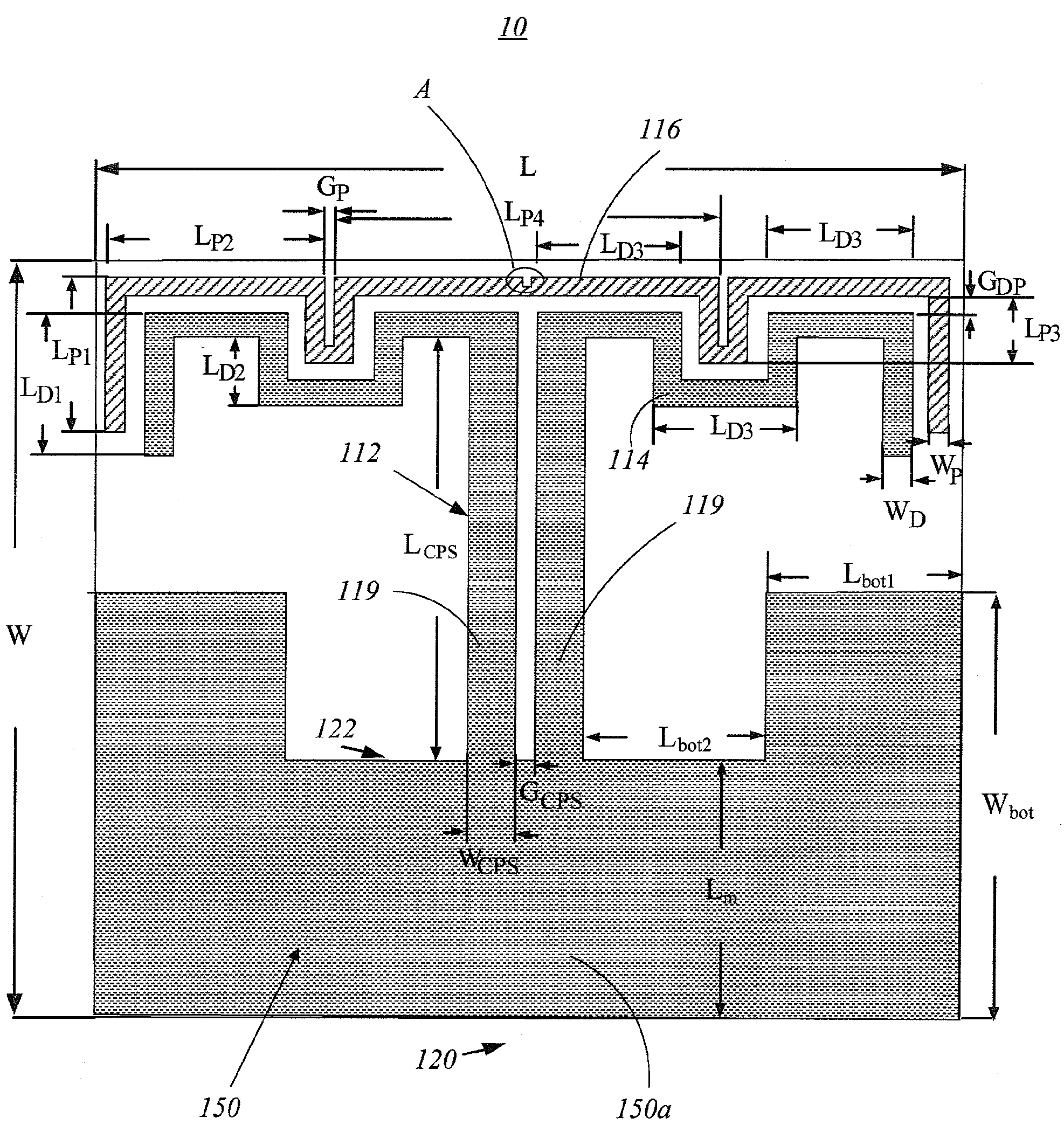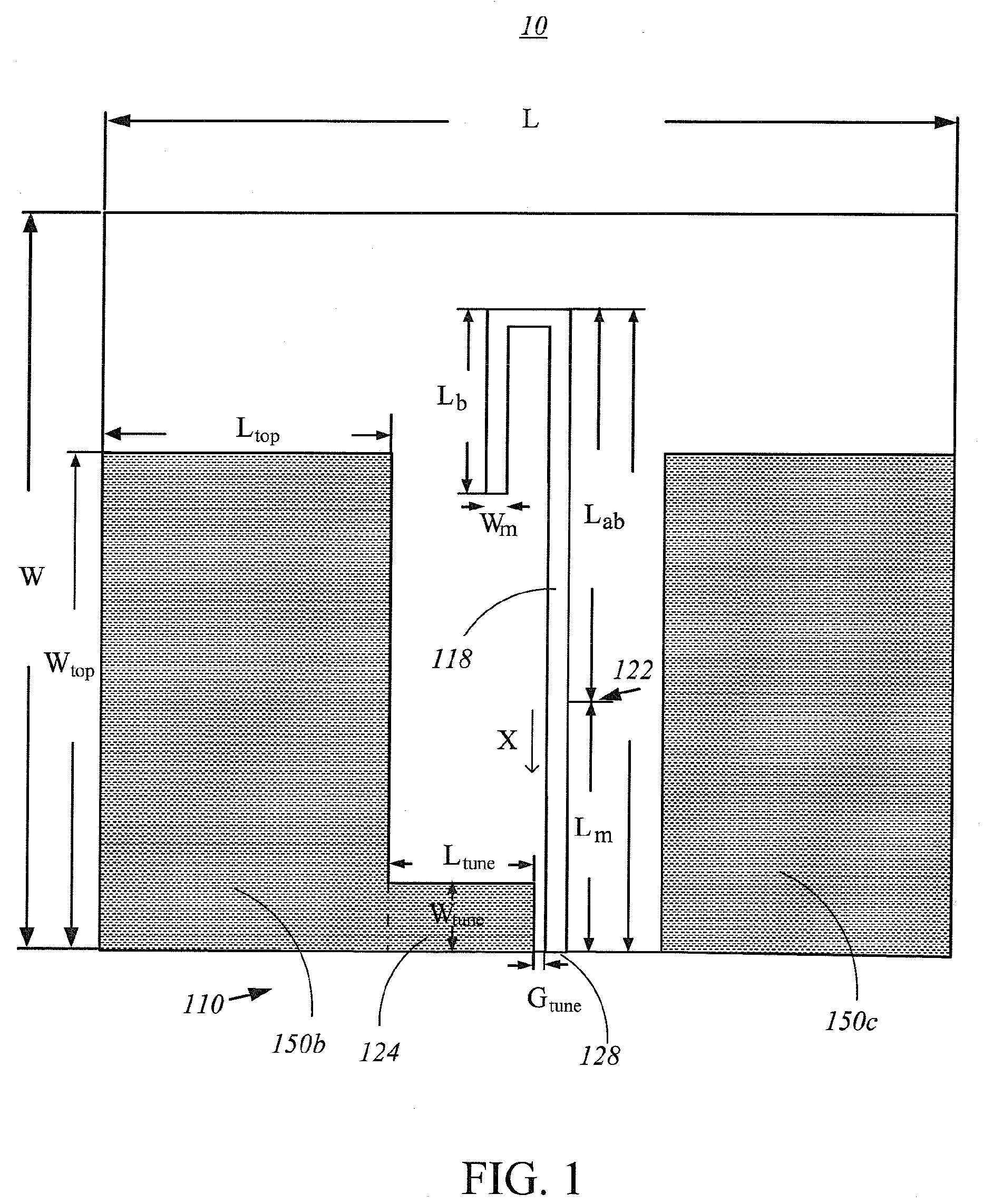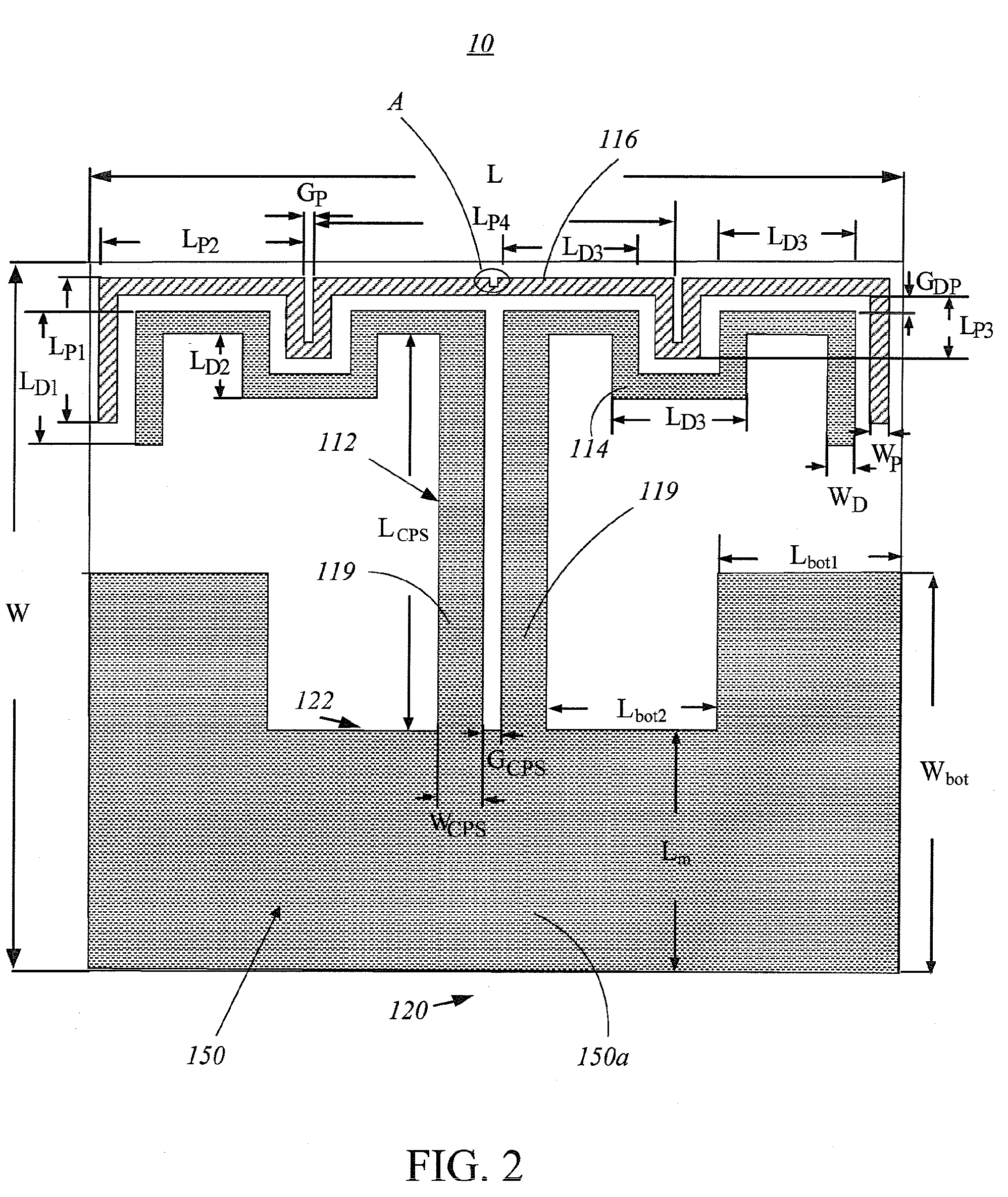Ultra high frequency planar antenna
a planar antenna, ultra-high frequency technology, applied in the direction of antennas, antenna details, antenna feed intermediates, etc., can solve the problem of relatively weak backscattered signal from the tag
- Summary
- Abstract
- Description
- Claims
- Application Information
AI Technical Summary
Benefits of technology
Problems solved by technology
Method used
Image
Examples
Embodiment Construction
[0018]Please refer to FIGS. 1, 2 and 3. FIG. 1 shows a first plane of an Ultra High Frequency (UHF) radio frequency planar antenna 10 according to a first embodiment of the present invention, FIG. 2 shows a second plane of the ultra high frequency radio frequency plane antenna 10 according to a first embodiment of the present invention, and FIG. 3 depicts an enlarged diagram of area A shown in FIG. 1. The planar antenna 10 is designed for UHF RFID applications in North America, i.e. in the frequency range of 902-928 MHz. In this embodiment, the planar antenna 10 with a width W of 90 millimeter (mm) and a length L of 90 mm, comprises a first plane 110 and a second plane 120. The first plane 110 comprises a part of truncated ground plane 150, a balun 112, a driven dipole 114 and a parasitic element 116. The truncated ground plane 150 comprises a first truncated ground plane 150a on the second plane 120, and a second and a third truncated ground planes 150b, 150c on the first plane 110...
PUM
 Login to View More
Login to View More Abstract
Description
Claims
Application Information
 Login to View More
Login to View More - R&D
- Intellectual Property
- Life Sciences
- Materials
- Tech Scout
- Unparalleled Data Quality
- Higher Quality Content
- 60% Fewer Hallucinations
Browse by: Latest US Patents, China's latest patents, Technical Efficacy Thesaurus, Application Domain, Technology Topic, Popular Technical Reports.
© 2025 PatSnap. All rights reserved.Legal|Privacy policy|Modern Slavery Act Transparency Statement|Sitemap|About US| Contact US: help@patsnap.com



